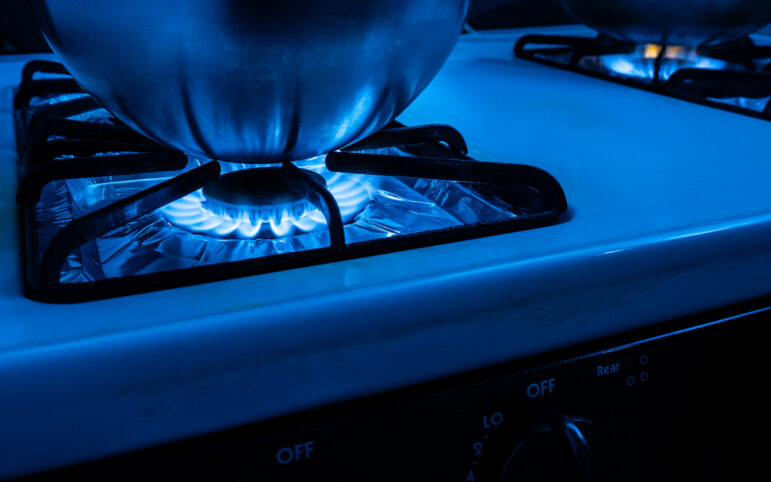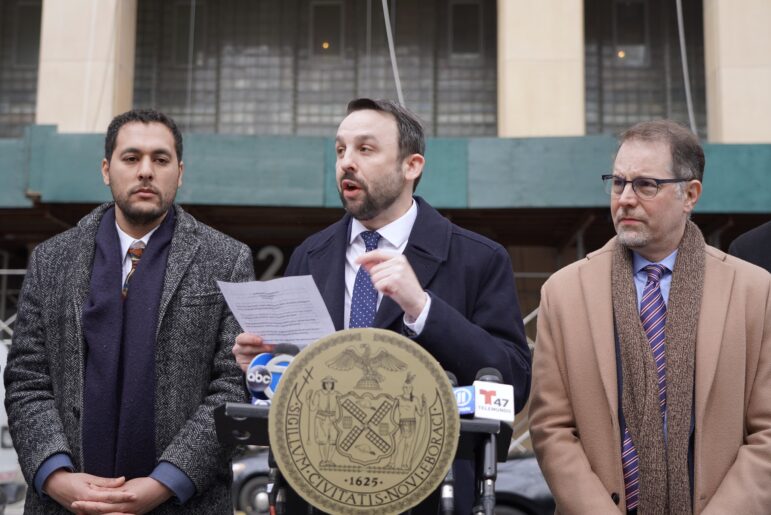Lakeisha Williams has a bank account. That doesn’t mean she always uses it. The home health aide from West Harlem sometimes can’t wait the few days it takes for her paycheck to clear. So she sacrifices about $20 to a check casher and gets her money immediately. “I ain’t got no problem with check cashers,” Williams says.
Check-cashing stores have for years been easy targets for advocates of economic justice, who have argued that the industry provides an expensive service and takes advantage of people who can ill afford it. But now some city officials and nonprofits are recognizing that in lower-income neighborhoods, many of which have a meager banking presence, check cashers fill a vital need by giving people access to their money.
More than 825,000 adults in New York City don’t have a bank account, according to the city’s Department of Consumer Affairs. People rely on the state’s nearly 700 check cashers for more than just money: They use the check outlets to pay utility and phone bills, buy subway passes and lottery tickets and refill prepaid debit cards.
Those services come at a high cost. In 2008, check cashers in two neighborhoods noted for their lack of mainstream banking services—Jamaica, Queens, and Melrose in the Bronx—took in $19 million in fees, according to a study done by the city’s Office of Financial Empowerment, a division of Consumer Affairs.
“We recognize that the traditional banking sector is uninterested in serving the low-income community,” says Peter Bray, the executive director of the New York City Financial Network Action Consortium. The nonprofit seeks greater access to banking services and credit for small businesses and lower-income people.
When the consortium first formed, it didn’t have a high opinion of check cashers. Over time, that position has shifted. The group recognizes that these stores often are poor people’s only way to change a check to cash. And New York regulates the industry, providing oversight that many states don’t have.
The consortium continues to develop local credit unions that help lower-income people improve their financial security. But credit unions aren’t likely to drive check cashers out of business. “These are people who need our help,” says Howard Stein, chairman of RiteCheck, which operates 12 stores in Harlem and the Bronx. Stein, 89, has been in the business since he returned from serving in World War II.
Today, check cashers provide convenience and clarity, says Ira Krell, the chief financial officer for David’s Financial Corp., which owns 24 check cashers in the city. “The transparency in pricing is a huge, huge determining factor,” says Krell. He explained that lower-income people often don’t trust banks because fees aren’t always apparent. When a person uses a check casher, he or she pays 1.83 percent upfront. There’s no question about hidden costs.
Check cashers offer other benefits. Most are open seven days a week, often for longer hours than banks—important for a person working two jobs. And some lower-income people don’t feel welcome at a mainstream bank, according to Peter Bray.
While Bray and the consortium acknowledge that check cashers play a vital role, they also know that profit, not service, is the motive. “We shouldn’t confuse [their work] with them doing anything to enhance the financial security” of lower-income people.
If the unbanked can master the banking system, they’ll see a difference in their wallets. Estimates are that a family of four with income equal to the official poverty line—$20,444—pay almost $400 in fees if they use check cashers rather than banks.
That’s why the city is trying to educate the inexperienced on the cost benefits of traditional banking, says Jonathan Mintz, the commissioner of the city’s Department of Consumer Affairs. The city has also had to convince banks that it’s worth it to attract lower-income customers.
“It’s a stepping stone that people on both sides of the table won’t regret,” says Mintz. To make that step surmountable, the city started NYC SafeStart Account at the beginning of 2010. Ten banks and credit unions, including Capital One and Amalgamated Bank, now offer a simple, understandable account. There are no overdraft fees and no monthly fees, provided customers keep a minimum balance of $25 or less. Mintz says it’s too early to tell how successful the program is, but he’s encouraged by early signs.
One of the participants in SafeStart, CheckSpring, is something of a hybrid financial institution. It opened its doors in the South Bronx in 2008, offering a wide array of traditional banking services for depositors in addition to normal check-cashing services for customers coming in off the street.
CheckSpring’s executives saw that traditional banks were ignoring the needs of potential customers. “There’s something wrong when supposedly predatory check-cashing stores are right across the street from a big commercial bank and people still choose the check-cashing store,” said Brian Blake, an assistant vice president of marketing.
CheckSpring has several programs designed to coax people into mainstream banking. Its check-cashing customers can place half of the check-cashing fee they pay in a savings account that’s accessible to the customer when the balance reaches a certain dollar amount. CheckSpring also participates in $aveNYC, a city program in which lower-income tax filers can earn 50 cents for every dollar of tax refund they save.
Financial incentives are important for bringing lower-income people through banks’ doors. But until more banks have enough faith in the market to offer better services to the poor, and unless the unbanked get comfortable with banks, lower-income neighborhoods are unlikely to be well-served by the traditional financial sector. Says Peter Bray: “We have to create trust.”








